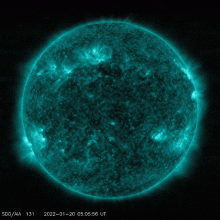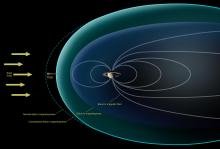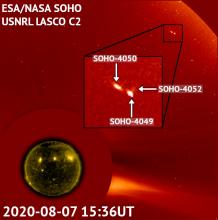Listen to today's episode of StarDate on the web the same day it airs in high-quality streaming audio without any extra ads or announcements. Choose a $8 one-month pass, or listen every day for a year for just $30.
You are here
Superflares
When the Sun gets unruly, it’s bad news for technology here on Earth. Outbursts of energy and particles can damage satellites, disrupt communications, and even knock out power grids.
But the outbursts we’ve seen so far may be puny compared to what the Sun might produce. Eruptions known as superflares could be hundreds or thousands of times more powerful — strong enough to damage or destroy much of our current technology.
The Sun’s outbursts are generated by its magnetic field. Lines of magnetic force get tangled like a bowl of spaghetti. When lines overlap, they can snap, triggering a solar flare — an outburst of radiation. Some flares are accompanied by eruptions of charged particles. Both radiation and particles can cause damage.
The biggest flare yet seen took place in 1859. There’s evidence in the geological record, though, of even bigger ones in the distant past. And studies in the last few years have seen flares that are bigger still on many Sun-like stars.
Most superflares come from stars that are younger than the Sun. They spin much faster than the Sun does, so their magnetic fields are much stronger.
But Kepler, a planet-hunting space telescope, detected superflares from several stars that are quite similar to the Sun — about the same age, temperature, and mass. That suggests that the Sun could produce superflares, too. They’d be quite rare. But it might take just one to zap our technology — leaving civilization in the dark.





